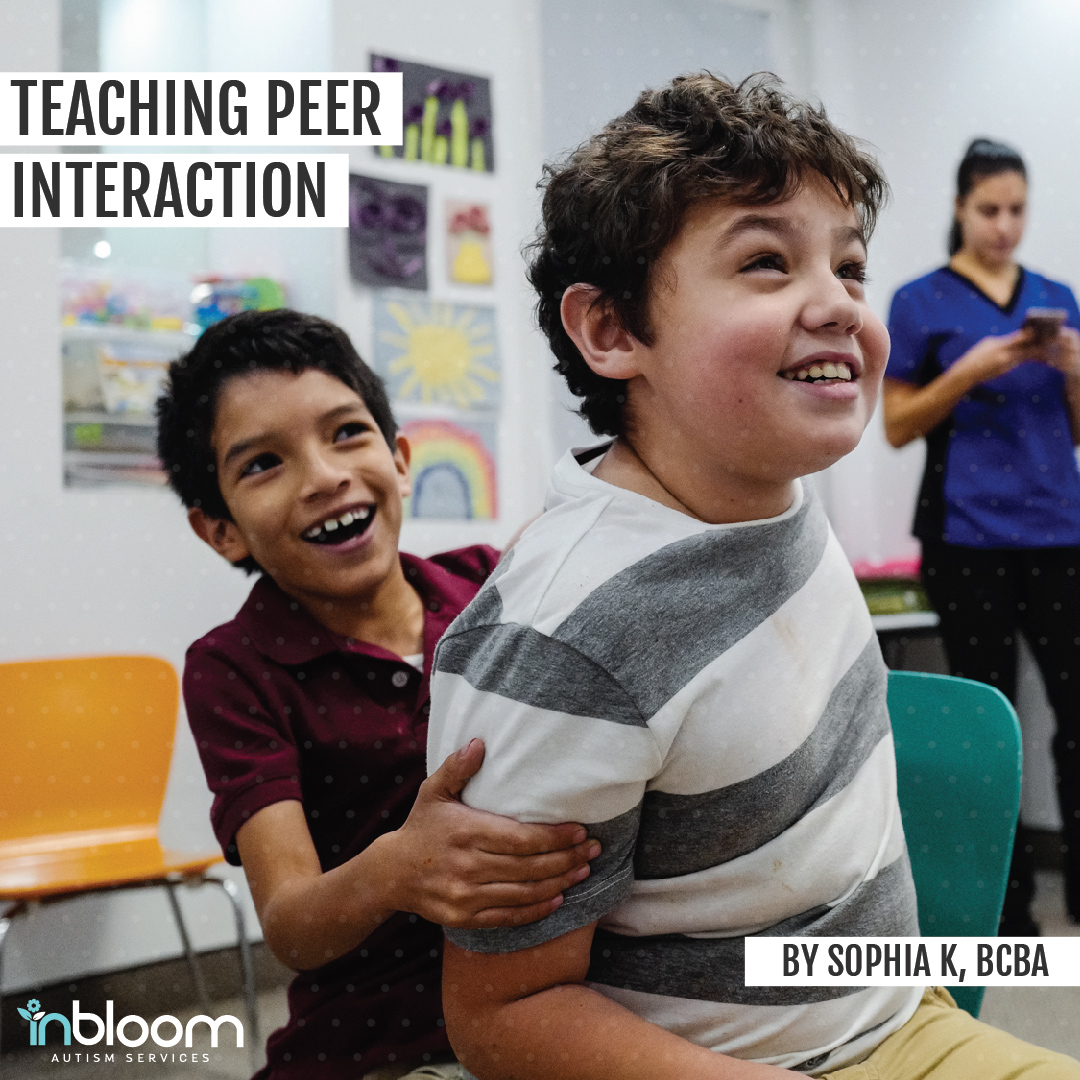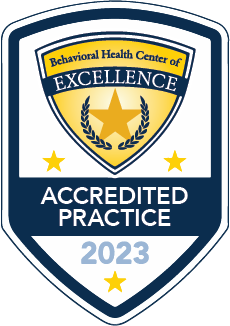August 5, 2020
TEACHING PEER INTERACTION

Oftentimes, parents of children with ASD express a variety of concerns in relation to peer interaction. These concerns can include that their child either has no interest in their same-age peers, or expresses interest, but is unable to initiate or sustain peer interactions. Social interactions are a very rich and fulfilling part of each of our lives. Therefore the importance of being able to sustain, at least a few, significant social relationships cannot be understated. So, how do we begin to teach something as complex and vague as “peer interactions?”
As I’m sure you’ve figured out by this point, peer interactions can be looked at as an umbrella term that encompasses many other sub-skills. Some of these may include sharing, taking turns, initiating greetings, engaging in cooperative play, requesting from peers, and holding a conversation with a peer, among many other skills! Oftentimes, prerequisite skills need to be developed before peer interactions can be tackled. These prerequisite skills might include eye contact, parallel play, following directions, and tolerating sharing and taking turns. When assessing social skills, ABA measures observable and countable social behaviors, and defines them in specific terms that can be measured to ensure progress towards goals. Above all else, social interactions can vary significantly based on the learner you are working with, so even peer interaction goals need to be very individualized to each learner’s needs.
Oftentimes, prerequisite skills need to be developed before peer interactions can be tackled.
There are various social skills curricula and assessments available that can help determine a learner’s strengths and what goals to target first, but often, a good way to make this determination can be by comparing the learner to their same age peers, and what those interactions look like. A park, a classroom or other social environments where you may see a group of young learners gather can be a good place to start! Depending on the learners’ age, ability level and individualized needs, some skills that might be targeted for a beginner can include:
- Making eye contact with peers
- Imitating the actions/play of peers
- Approaching or tolerating close proximity to peers
- Requesting items from peers
- Imitating peers in functional play
- Initiating and reciprocating greetings with peers
- Giving and receiving items to and from peers (sharing)
- Taking directions from peers
- Simple turn-taking games with peers
Once these skills have been mastered and are occurring fluently in the natural environment, next goals may include:
- Requesting attention from peers
- Requesting help from peers
- Initiating and sustaining simple (short exchanges) conversation
- Dynamic play with peers (including commenting, etc.)
- More complex game play
- Joining in slightly larger groups of peers
Depending on the age of the learner, you may even take these goals one step further and focus on more nuanced conversation and social skills, including:
- Perspective taking skills
- Maintaining longer and more complex conversations, including staying on topic
- Appropriate social behavior and social rules in various environments and contexts (Ex: at a restaurant vs. at a friend’s house)
- Cooperation skills and appropriate physical behavior (maintaining an appropriate amount of personal space, appropriate touch, etc.)
Interactions and skills such as the ones highlighted above can be contrived with an adult in
the therapeutic environment and once mastered, can be generalized to known peers. Peers can be more unpredictable than adults, so teaching these interactions directly with other children can be more difficult, especially with emerging or brand-new skills. It’s important that taught skills are reinforced in the natural environment (by peers) so that the learner is encouraged to continue engaging with them. The last thing we’d want is for the learner to have a negative interaction (when starting out) and become hesitant to engage with peers at all! However, tolerance and perseverance in the face of negative interactions is also an imperative skill to teach – social interactions don’t always go as planned! It’s also important to break these skills down into their component parts and teach each of them separately so as not to ask too much of the learner all at once.
It’s important that taught skills are reinforced in the natural environment (by peers) so that the learner is encouraged to continue engaging with them.
The key to success is to be patient and let the learner be your guide. They will let you know when they are ready for next steps! Eventually, as each of these skills are mastered, they can be put together into a cohesive and more naturally occurring sequence. Interactions with peers in the natural environment can be set up for success by working with known peers, and peers who are likely to be cooperative with your learner. The more successful interactions that your learner can contact during teaching, the better!
As you can see, peer interactions can be a complex “umbrella” under which a variety of skills can be taught depending on your learner’s specific needs and abilities. Your BCBA can be a great resource to talk to you in depth about any prerequisite skills that your learner may need to acquire first, before moving into more social environments and beginning to generalize those skills to their same-age peers. Or if your child has already mastered those prerequisite skills, it may be time to start discussing what types of social environments or peers would be most appropriate to start working on some meaningful and fulfilling peer interactions!
ABOUT THE AUTHOR
SOPHIA K, BCBA
Sophia was born and raised in South Florida. After getting her Bachelors degree in Psychology at Northeastern University in Boston, Sophia obtained her Masters degree at the University of Texas at Austin and became a BCBA in February 2017. She has ten years of experience working with learners with special needs. Outside of work, Sophia enjoys reading, cooking and spending time with her “Chiweenie” puppy!


